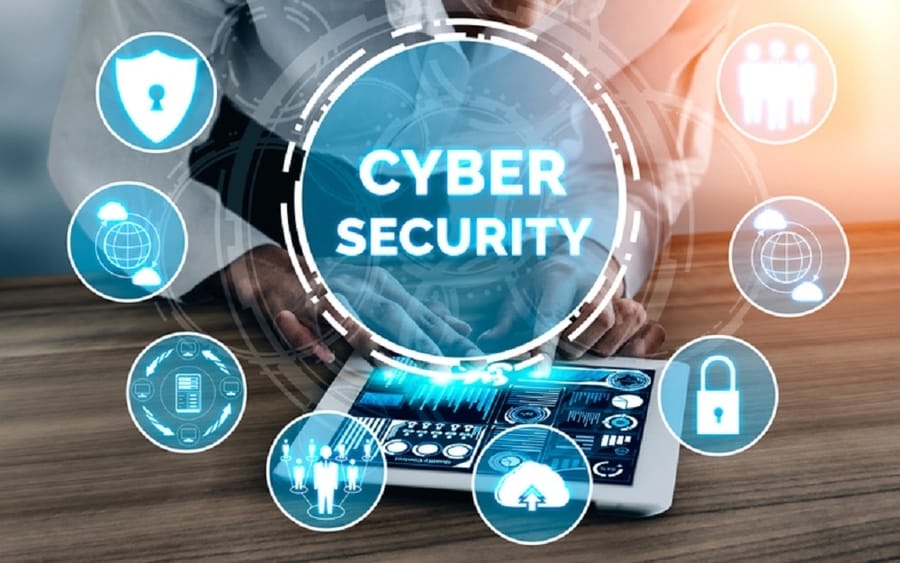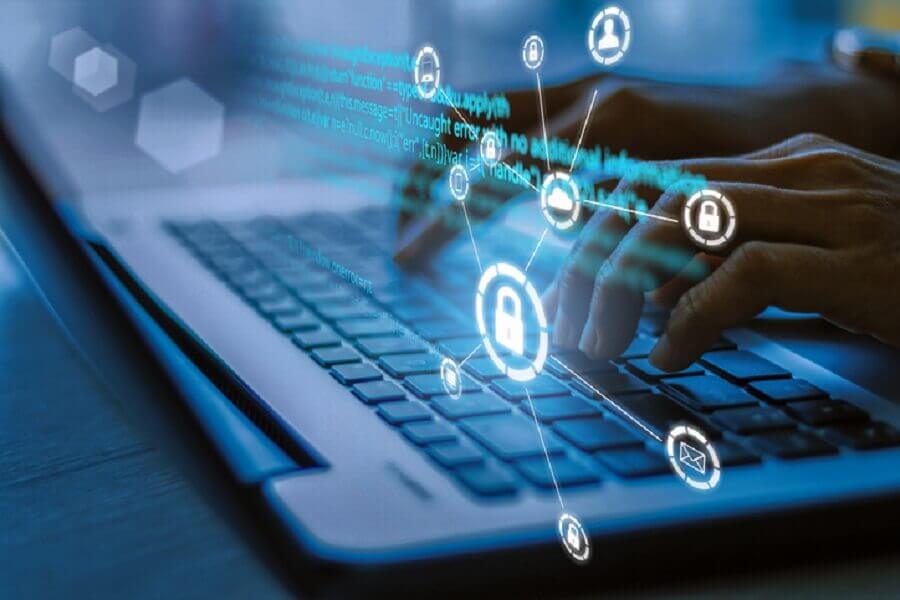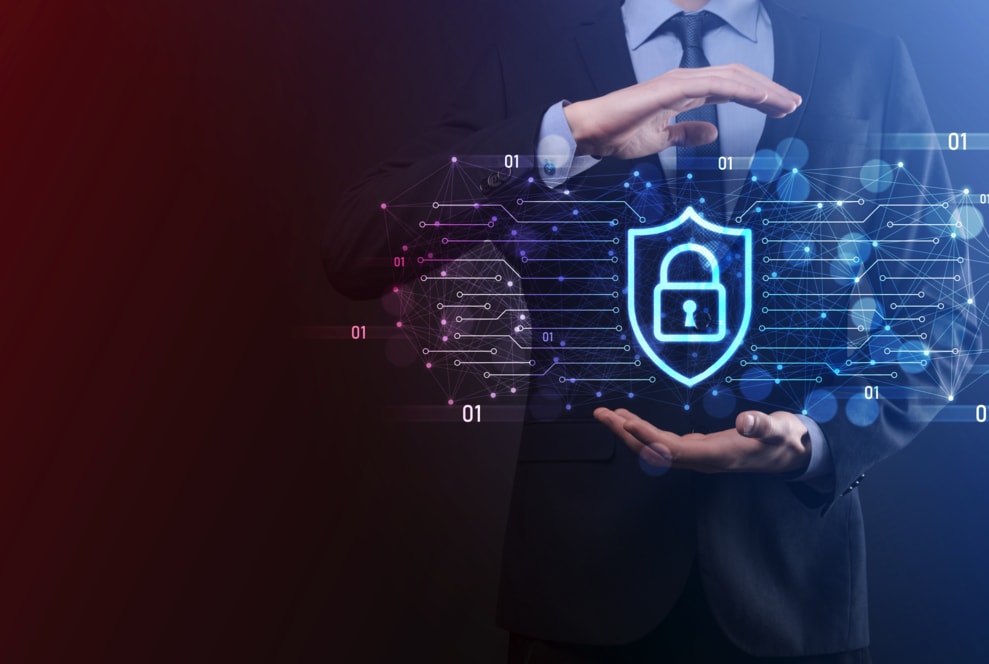When most people think of cybersecurity, they likely think of personal cybersecurity - protecting their own devices and data. However, there is a whole other world of cybersecurity that exists beyond our individual devices: enterprise cybersecurity. Enterprise cybersecurity is the protection of an organization's digital assets and information. This can include anything from the organization's website and online presence to its internal networks and data. In order to protect these assets, organizations need to have a comprehensive cybersecurity strategy in place. This strategy should include measures for preventing cyberattacks, detecting them when they occur, and responding appropriately. Cybersecurity is not just about defending against hackers; it's also about protecting against accidental breaches, data theft, and other types of attacks. Businesses of any size are concerned with completing orders, seeding future business, supply chain concerns, and now, cyber threats from every possible source. Due to internal leaks and external attacks, IT professionals can never rest or become complacent when it comes to enterprise cybersecurity. Protecting information and IT assets against unauthorized access can prevent internal security risks caused by human error or disgruntled employees. Enterprise cybersecurity is the practice of locking down access and exit points for data to eliminate as many potential threats as possible. That means extending a business’s security beyond traditional boundaries to include the cloud, the Internet of Things, user identity verification, vendor security, and anything else involved in end-to-end use. Some are calling it the Zero Trust model of security. It also requires a fundamental shift in the value of data protection, putting security on par with the most valued assets of a company, including growth and innovation. Doing otherwise invites catastrophe in today’s interconnected world that is rife with stealth attacks.
Why is Enterprise Cybersecurity So Important?
Enterprise security is important, therefore, enterprise cybersecurity as well. Nearly one-third of all businesses of all sizes have reported breaches in recent years. Threats originate from a wide variety of sources now, human and bot, including bad actors supported by national governments. Whether stealing customer data, ransom, or simple mischief is the objective, a breach can do significant damage, erasing years of hard work. Businesses must be one step ahead of vulnerabilities by knitting together an impenetrable shield consisting of: ● End-to-end security. ● Employee education and vigilance. ● Validation of credentials. ● Early detection capabilities to reduce losses. ● Internal communication among departments to identify vulnerabilities. ● Coordination with vendors and clients to close gaps. Large enterprises are at risk of cyberattacks not just because they have more assets to protect but also because there are more attackers interested in breaching their defenses. For this reason, enterprise cybersecurity is becoming increasingly important. Here are two reasons why your organization should prioritize enterprise cybersecurity:
1. Slowing down hackers can give you time to detect them and respond effectively.
Many large organizations have deep pockets that hackers want to get into for financial gain or other illicit purposes. If a hacker has an issue getting past the initial line of defense, they may move on instead of taking the time needed to try different approaches until they find one that works. The longer it takes for someone to get into your company's digital assets, the more time you have to detect the breach and take action.2. Enterprise cybersecurity is a portfolio management issue.
Your organization has many different assets that need protecting, including everything from your website to internal networks and systems to databases containing sensitive information about clients, employees, etc.. Measuring these assets in terms of their criticality helps prioritize security measures appropriately. Different types of threats may pose greater or lesser risks depending on which types of assets they target. By understanding the relative value of broadly defined digital assets you can make a reasonable assessment of where enterprise cybersecurity efforts will most benefit your company. Encryption is the watchword for this decade, but the integration of several layers of security is just as important. That can be particularly challenging when business growth is the mantra for employees at all levels. Grow too fast or add too many helpful technologies without integrating them into your security network, and you may be stung by malicious actors that find vulnerabilities.
Data Breaches Affect Businesses of All Sizes
Healthcare businesses lead all categories of security breaches, with an average cost of over $9 million per incident, a nearly 30 percent increase over the previous year. Public sector breaches have skyrocketed in cost, likely due to recent ransomware attacks, to an average of over $1.9 million. A small business may be challenged to focus on security when resources are stretched thin, but the stakes are high when it comes to data breaches, whether from a bad actor outside the company or a lax employee who accidentally downloads malware inside the company. Small businesses are more likely to rely on subcontractors for aspects of system functionality, so segmenting security is key. Restrict access to only those whose scope of work requires access to data as well as to other systems, as human error is a major factor in breaches. Growing the business should be done hand-in-hand with maintaining security. Outsourcing some tasks to leapfrog growth issues like onboarding employees may shortcut costs and optimize principals’ time, but it may also open you to new vulnerabilities such as hacking or malware piggybacking on files exchanged. IT experts advocate making all players, including subcontractors, part of your company’s enterprise cybersecurity plan. The first step in developing an enterprise cybersecurity plan is sitting down with key players to determine the company’s risks and vulnerabilities, even those that appear obvious. These steps are crucial for entrepreneurs who may be so involved in the broad vision that day-to-day threats are invisible until they stop a company in its tracks. ● Map out the company’s IT security strategy and take measures for preventing cyberattacks. Test it with use case scenarios to identify weak spots for malicious access, whether they are temporary passwords or a lack of red-flagged ISP addresses and locations. ● Stay informed about new and potential threats and how they would approach or breach your security system. ● Communicate with vendors and cloud partners to close gaps in security. ● Ensure there are clear steps in place for cutting off an employee’s access to sensitive information when they leave the company. ● Plan for breaches, including how losses are determined, how partners are informed and protected, and how recovery should begin. Losses may be calculated in dollars, but reputational damage due to slow reaction and disorganized responses are likely to be just as harmful. ● Outline ways to inform and educate clients whose data may be at risk. Early detection and transparency with clients are key to restoring faith in the company and minimizing reputational loss.
Cyber Threats
The enterprise security architecture must protect against social engineering and malware threats while ensuring secure physical access. Social engineering is one of the most common ways that hackers gain access to company data. Social engineering occurs through exploiting the human factor of security – lulling one or more gatekeepers, even low-level customer service reps, into allowing access in some small way. While companies are accustomed to employee vulnerabilities, including phishing attacks or a disgruntled contractor selling data out the back door, this sort of human factor can be minimized by segmenting security and allowing limited access only to those who require data to complete their tasks. ● These scenarios make employee education a primary form of security against attacks, but are you prepared for these as well? ● Is your company prepared for MySQL injection hacks via web forms? ● Is client data encrypted both when in transmission and in storage? ● Do you know how much of your company’s data is kept by subcontractors and partners and whether it is encrypted when stored on the client company’s server? ● Have you assessed the potential threat of bundled malware or drive-by downloads on mobile devices used by employees on the job, and whether that sort of malicious actor can jump to company systems and databases? Is your security protocol equipped to find and eradicate nefarious packet sniffers before they harm your network or interrupt the flow of traffic? ● Are processes in place to isolate, contain, and identify unfamiliar users or zero-day threats?
Data Leaks
The larger threat in the news is things like Solar Winds, the IT software company that was hacked, allowing access to customers’ systems through malicious code. This was a new type of infiltration that will certainly be mimicked by others in the future and one that challenged security experts to extend their firewalls, moats, and other apparatus in new directions. Another widespread breach was T-Mobile customer information which compromised crucial telephone numbers used in two-factor authentication, a significant breach that may still be felt years in the future as hackers assemble key pieces of stolen and leaked personal information available on the dark web. But there are a multitude of minor threats chipping away at a company's security protections, crawling websites and databases for security flaws, which can bring down a small company or do long-term damage. Data leaks can involve more than client information. A competitor or even an unhappy employee may seek to damage your enterprise with: ● The loss of a proprietary formula. ● Key to unlocking security protocols that protect your systems. ● Stolen employee data that could cause internal disruption.

Consequences of Cyber Attack on Enterprise
Financial damage is a given in a cyber-attack, particularly if a data leak results in sanctions by customers or governments charged with enforcing conformance to privacy laws. There is also time lost in containing the issue, eradicating the threat, and rebuilding damaged components of infrastructure. Other consequences are not easily tallied on a spreadsheet, such as loss of confidence in the company both by customers and partners, loss of employee morale, and potentially additional costs of restructuring everything from security protocols to employee access permissions. The compromise of R&D intelligence, customer data, and company secrets leads to the loss of millions of dollars in terms of trust, confidence, and monetary value. As such, enterprises must employ a risk management approach against targeted attacks.
Enterprise Cybersecurity Best Practices
Threats to databases and other corporate assets will always be present, and they will always be mutating to attack in new and unexpected ways. This requires new business practices, including interacting with clients and partners more intimately to ensure cooperative security protocols. By examining your company’s assets, practices, employee access, client/partner connections, and public portals, you should be able to identify and limit most of your vulnerabilities. Vigilance is key: never assume the threat has abated or that a new connection to the company network is benign. Yet building a higher wall for intruders to scale is not the complete solution; it’s cooperation among trusted partners to ensure security for all. Most organizations know that they need some level of cybersecurity to protect data from attackers, but they don't know how to plan and implement it. All planning, deployment, maintenance, vendor risk management and improvement should be delegated to an expert to avoid mistakes in the process. Building strong enterprise security architecture is a key factor to seamless security management. Implementing strategic, comprehensive security solutions protects your organization's assets, user data, and ultimately, your brand's reputation. Best practices include: ● Threat identification and assessment. You can't defend against what you don't know about. In order to have an effective enterprise cybersecurity strategy, you need to understand the different types of threats that are out there and how they could potentially impact your organization. This includes understanding both the technical and non-technical aspects of various threats. ● Ways to detect, isolate, and neutralize internal and external threats. ● Integration of security from end-to-end, including coordination with partners/clients and detection of packet sniffers and other up-to-the-moment threats. ● Continuous employee education to reduce human error in drive-by downloads or social engineering threats. One of the most important aspects of enterprise cybersecurity is training employees on how to stay safe online. Protecting the corporate network extends beyond the information technology team -- everyone needs to be aware of security policy, compliance regulations, and potential vulnerabilities, such as phishing or social engineering schemes. Employees need to be aware of the different types of threats that exist and know how to protect themselves and the company's assets. ● Granular-level examination of all potential flaws and vulnerabilities, including employees’ personal devices, use of temporary passwords, MySQL injection possibilities, and more. ● Stronger security for alpha users and principals, including adherence to protocols. ● Usage of two or more pieces of evidence to an authentication mechanism: two-factor or multi-factor authentication (MFA). ● Creation of a plan for identifying and isolating a breach, reacting to the data security breach, and rebuilding after a breach. In order to mitigate the risks posed by cyberthreats, you need to put in place appropriate controls. This includes using strong passwords, patching systems regularly, and using malware protection software. Cybersecurity is a constantly evolving landscape. You need to be constantly monitoring your systems for new threats and evaluating your security measures to ensure that they are effective.





